Lecture1基本概念
- 格式:ppt
- 大小:604.00 KB
- 文档页数:21
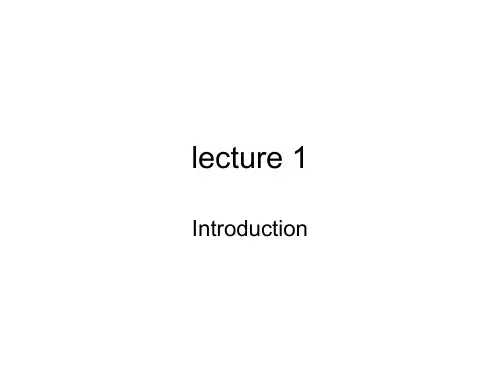
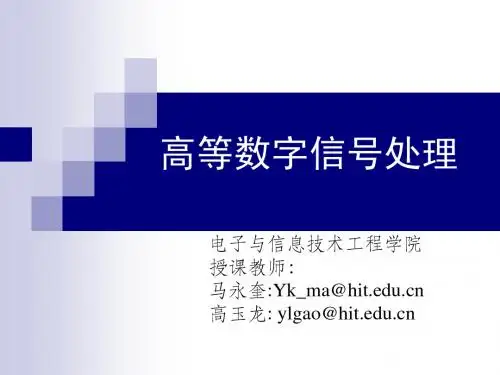
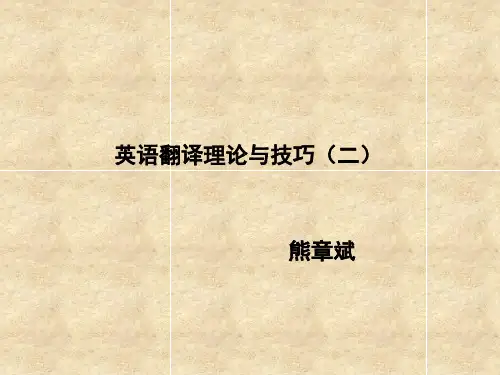
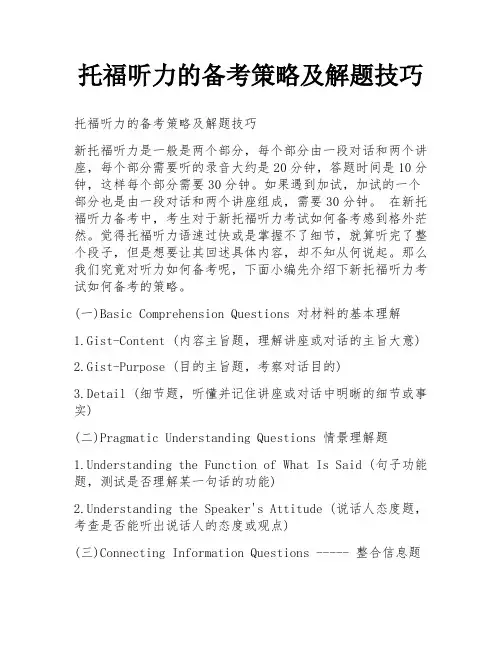
托福听力的备考策略及解题技巧托福听力的备考策略及解题技巧新托福听力是一般是两个部分,每个部分由一段对话和两个讲座,每个部分需要听的录音大约是20分钟,答题时间是10分钟,这样每个部分需要30分钟。
如果遇到加试,加试的一个部分也是由一段对话和两个讲座组成,需要30分钟。
在新托福听力备考中,考生对于新托福听力考试如何备考感到格外茫然。
觉得托福听力语速过快或是掌握不了细节,就算听完了整个段子,但是想要让其回述具体内容,却不知从何说起。
那么我们究竟对听力如何备考呢,下面小编先介绍下新托福听力考试如何备考的策略。
(一)Basic Comprehension Questions 对材料的基本理解1.Gist-Content (内容主旨题,理解讲座或对话的主旨大意)2.Gist-Purpose (目的主旨题,考察对话目的)3.Detail (细节题,听懂并记住讲座或对话中明晰的细节或事实)(二)Pragmatic Understanding Questions 情景理解题1.Understanding the Function of What Is Said (句子功能题,测试是否理解某一句话的功能)2.Understanding the Speaker's Attitude (说话人态度题,考查是否能听出说话人的态度或观点)(三)Connecting Information Questions ----- 整合信息题1.Understanding Organization (组织结构题,识别整个听力材料的结构和听力材料中两个部分之间的关系)2.Connecting Content (连接内容题,考查对材料中各观点之间的关系的理解能力,有时需要根据所听内容来推测)3.Making Inferences (推论题,根据已听到的内容得出结论)对于听力基础较弱的同学,尤其要抓住的就是类--基本理解题。
我们把其中的前两种题型Gist Content(内容主旨题)以及Gist Purpose(目的主旨题)统称为Gist Questions(主旨题)。
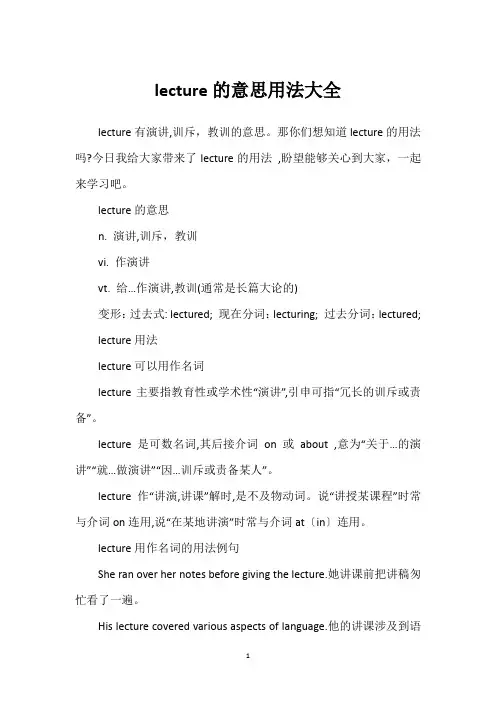
lecture的意思用法大全lecture有演讲,训斥,教训的意思。
那你们想知道lecture的用法吗?今日我给大家带来了lecture的用法,盼望能够关心到大家,一起来学习吧。
lecture的意思n. 演讲,训斥,教训vi. 作演讲vt. 给…作演讲,教训(通常是长篇大论的)变形:过去式: lectured; 现在分词:lecturing; 过去分词:lectured;lecture用法lecture可以用作名词lecture主要指教育性或学术性“演讲”,引申可指“冗长的训斥或责备”。
lecture是可数名词,其后接介词on或about ,意为“关于…的演讲”“就…做演讲”“因…训斥或责备某人”。
lecture作“讲演,讲课”解时,是不及物动词。
说“讲授某课程”时常与介词on连用,说“在某地讲演”时常与介词at〔in〕连用。
lecture用作名词的用法例句She ran over her notes before giving the lecture.她讲课前把讲稿匆忙看了一遍。
His lecture covered various aspects of language.他的讲课涉及到语言诸方面的问题。
They could not follow the lecture.他们听不懂这次演讲。
lecture可以用作动词lecture作“讲演,讲课”解时,是不及物动词。
说“讲授某课程”时常与介词on连用,说“在某地讲演”时常与介词at〔in〕连用。
lecture也可用作及物动词,意思是“向…讲演,给…讲课”,接名词或代词作宾语。
lecture还可作“责怪”“教训”“训斥”解,用作及物动词,接名词或代词作宾语。
“因…而受到训斥”可说lecture sb for n./v -ing。
lecture用作动词的用法例句It was a shame for me to be lectured in front of the whole class.当着整个班级的面被训斥了一顿,真让我感到羞辱。
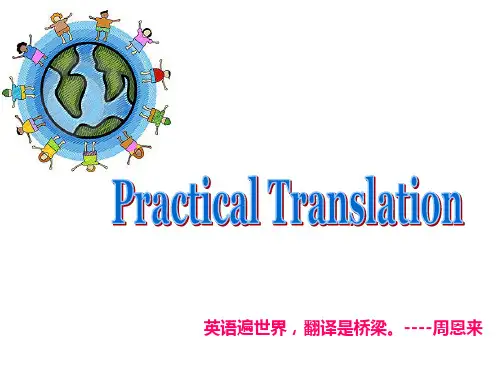
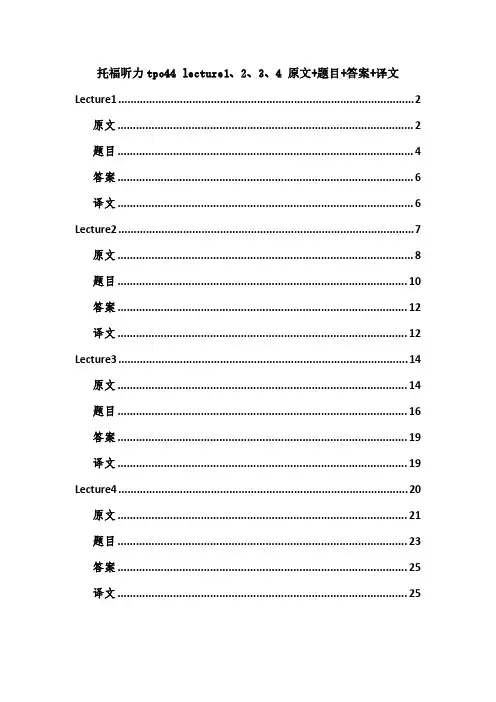
托福听力tpo44lecture1、2、3、4原文+题目+答案+译文Lecture1 (2)原文 (2)题目 (4)答案 (6)译文 (6)Lecture2 (7)原文 (8)题目 (10)答案 (12)译文 (12)Lecture3 (14)原文 (14)题目 (16)答案 (19)译文 (19)Lecture4 (20)原文 (21)题目 (23)答案 (25)译文 (25)Lecture1原文NARRATOR:Listen to part of a lecture in a materials science class.MALE PROFESSOR st time we finished going over some of the fundamental concepts of nanotechnology—the multidisciplinary science of manipulating—or controlling—extremely small units of matter,on the scale of molecules or even atoms.So,I want to talk about how nanotechnology is being used today,and,just to give you an idea,we'll look at one particular application.A team of materials scientists in Massachusetts has been working on a new,ultrathin coating,a nanocoating that might be applied to objects like bathroom mirrors,car windows,and eyeglasses to prevent fogging.And the coating has the potential to be a permanent solution,unlike the kinds of anti-fogging,spray-on liquids that are on the market today...Now,fogging often occurs when a cold surface comes into contact with warm,moist air,such as when a glass shower door or mirror fogs up during a warm shower.…Now,what's actually happening is,uh,what the fog is,is thousands of tiny spherical water droplets condensing on the surface of the glass.Light hits the water droplets and is scattered in random directions,causing the fogging effect.Now,the kind of spray-on treatments I mentioned,well,they wear off.What happens is they cause the tiny water droplets to flatten when they condense on the surface of the shower door,or bathroom mirror,or whatever object it is that it's been applied to.Because the droplets are flattened,when light hits them,the light doesn't scatter. But as I said,those kinds of treatments don't last very long.The new coating has two important components.One:negatively charged silicananoparticles—these are basically tiny particles of glass.And two:a positively charged polymer—which,you already know,a polymer is a chemical compound. These're layered over each other…the polymer,then the silica nanoparticles,the polymer,then the silica nanoparticles,you see.They're layered in such a way that the silica nanoparticles don't pack together tightly.In other words,the structure has pores,or holes,little tiny pockets,throughout it.The coating prevents fog from developing because it loves water.It attracts the water droplets—sucking them into the tiny pores.And that alters the shape of the droplets; the droplets are forced to flatten and to join together into a single sheet of water, rather than remaining as single droplets—each of which is a sphere that scatters light in different directions.OK,so instead of being scattered,the light passes through the thin sheet of water.So there's no fogging effect.The ultrathin coating can be made more durable by heating it—and of course the object it's applied to—to an extremely hot temperature—500degrees Celsius.What that does is burn the polymer away and fuse the silica nanoparticles together—while maintaining the structure of pores.But that's possible only on materials that can withstand high heat.Glass,yes.Plastics, no.But they're working on solving that problem;trying to come up with a way to coat plastics and other materials durably and effectively.Interestingly,it was a plant—the lotus plant—that inspired this work,I guess you could say inspired it in an indirect sort of way.The leaves of this plant are what we call“superhydrophobic.”Lotus leaves,being superhydrophobic,don’t attract water—they repel it—in a big way.When raindrops fall on lotus leaves,they remain spherical.They roll right off.So for a long time the Massachusetts scientists tried to create a coating that acted like these lotus leaves—a coating that was superhydrophobic.But then they began to think about the opposite extreme.Uh,could they accomplish their goal by making acoating that,instead of repelling water,actually attracted water?Well,they seem to have gotten quite far with this approach.It’s really strong work with a range of interesting consumer applications.It's not costly to manufacture the coating.Some car makers are interested in applying it to their windshields.Looks like we'll probably see it on the markets in everyday products in the next few years.题目1.What is the main purpose of the lecture?A.To provide an example of a practical use of nanotechnology.B.To show the origins of the field of nanotechnology.C.To give a brief outline of the main concepts of nanotechnology.D.To explain the growing interest in nanotechnology research.2.How does the professor organize the information he presents to the class?A.He describes the inspiration behind the nanocoating,then how the coating works.B.He describes how the nanocoating is currently marketed,then the inspiration behind it.C.He explains how fogging occurs,then the basic concepts of nanotechnology.D.He explains how fogging occurs,then how the nanocoating prevents it.3.According to the professor,how does the new nanocoating work?A.By forcing light to bounce off a glass-coated polymer.B.By forcing water droplets to roll off an ultrathin surface.C.By causing water droplets to merge into a single sheet of water.D.By causing light to scatter randomly in many directions.4.According to the information in the lecture,why does the new nanocoating not last as long on plastic as it does on glass?A.Plastic cannot withstand extremely high temperatures.B.The internal structure of plastic repels a positively charged polymer.C.The coating solution scatters when it comes into contact with plastic.D.Plastic surfaces scratch more easily than glass surfaces do.5.What inspired the team of scientists in developing the new coating?A.A problem the team frequently encountered in everyday life.B.The ineffectiveness of spray solutions in flattening water droplets.C.The leaves of a plant that the team had been investigating.D.Interactions observed between silica nanoparticles and polymers.6.What is the professor's opinion about the approach inventors took to the development of the new nanocoating?A.He thinks other inventors should use a similar approach.B.He is impressed by the flexibility of their approach.C.He is surprised the research process took so long.D.He thinks they should have spent more time testing a superhydrophobic coating.答案A D C A C B译文旁白:请听一段材料科学的讲座。
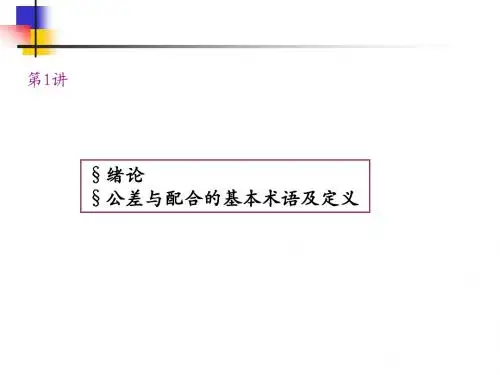
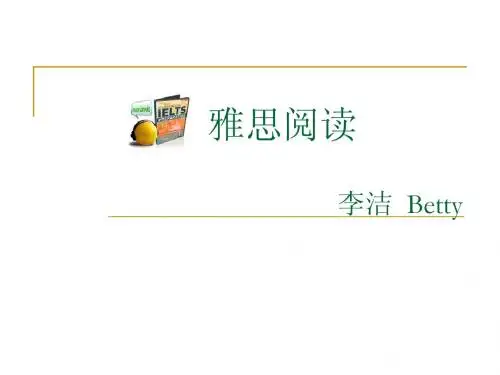

lecture的意思
"Lecture" 是一个名词,指的是一个口头演讲或教学活动,通常由一个专家或教师向一群学生或听众传授知识或信息。
Lecture 通常在学术环境中进行,如大学、学院或研究机构,也可以在其他场合比如会议、研讨会或商业培训中进行。
Lecture 的特点是由演讲者单向传递知识,学生或听众通常以被动接收的方式参与。
演讲者可能会使用幻灯片、视听材料或其他辅助工具来帮助讲解和理解。
Lecture 的目的是教育、启发和传授新的信息,通常会涉及特定学科的概念、理论、研究成果、案例分析等。
Lecture 的长度可以根据不同的情况而有所变化,从几分钟到几个小时不等。
有些大型课程可能由多个 lecture 组成,形成一个完整的课程或学期。
在一些教育环境中,lecture 可能会与小组讨论、实验室实践或作业相结合,以加深学生对所学内容的理解和应用能力。
Lecture 是一种常见的教学方法,有助于学生学习和思考。
然而,一些人认为 lecture 的效果有限,容易导致学生的被动接受和消极参与。
因此,在现代教育中,许多教育者也在探索和采用更具互动性和参与性的教学方法,如讨论、小组合作、案例研究等,以提高学生的学习效果和动力。
lecture 是一种教学活动,通过口头演讲向学生或听众传授知识和
信息。
它是传统的教学方法之一,可以在学术环境和其他场合中使用,旨在教育、启发和传达新的思想和理念。
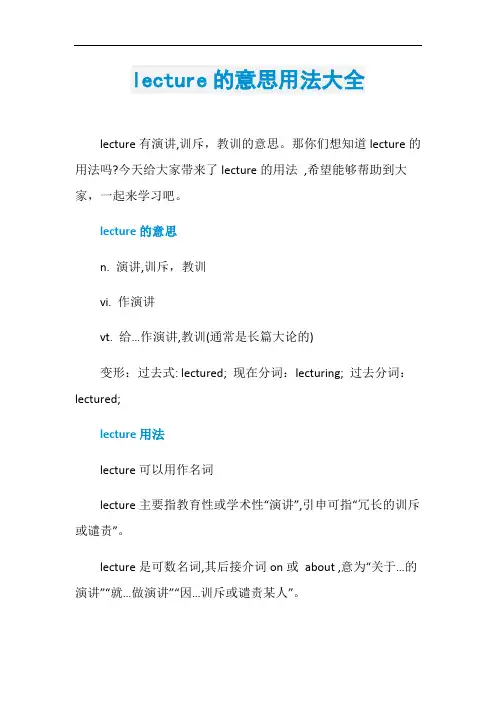
lecture的意思用法大全lecture有演讲,训斥,教训的意思。
那你们想知道lecture的用法吗?今天给大家带来了lecture的用法,希望能够帮助到大家,一起来学习吧。
lecture的意思n. 演讲,训斥,教训vi. 作演讲vt. 给…作演讲,教训(通常是长篇大论的)变形:过去式: lectured; 现在分词:lecturing; 过去分词:lectured;lecture用法lecture可以用作名词lecture主要指教育性或学术性“演讲”,引申可指“冗长的训斥或谴责”。
lecture是可数名词,其后接介词on或about ,意为“关于…的演讲”“就…做演讲”“因…训斥或谴责某人”。
lecture作“讲演,讲课”解时,是不及物动词。
说“讲授某课程”时常与介词on连用,说“在某地讲演”时常与介词at〔in〕连用。
lecture用作名词的用法例句She ran over her notes before giving the lecture.她讲课前把讲稿匆匆看了一遍。
His lecture covered various aspects of language.他的讲课涉及到语言诸方面的问题。
They could not follow the lecture.他们听不懂这次演讲。
lecture可以用作动词lecture作“讲演,讲课”解时,是不及物动词。
说“讲授某课程”时常与介词on连用,说“在某地讲演”时常与介词at〔in〕连用。
lecture也可用作及物动词,意思是“向…讲演,给…讲课”,接名词或代词作宾语。
lecture还可作“责备”“教训”“训斥”解,用作及物动词,接名词或代词作宾语。
“因…而受到训斥”可说lecture sb for n./v -ing。
lecture用作动词的用法例句It was a shame for me to be lectured in front of the whole class.当着整个班级的面被训斥了一顿,真让我感到羞辱。
lecture的词根词缀摘要:一、前言二、lecture 词根词缀的来源1.词根lect-2.词缀-ure三、lecture 的词义及演变1.最初的含义2.后来的引申义四、lecture 的常用搭配及例句五、总结正文:一、前言在学习和使用英语的过程中,了解词根词缀的来源和含义对于扩大词汇量和提高英语水平具有重要意义。
本文将围绕lecture 这个词,探讨其词根词缀的来源及其在英语中的运用。
二、lecture 词根词缀的来源1.词根lect-词根lect-源于拉丁文动词legere,意为“读”。
在英语中,lect-作为词根,常与表示某种动作或状态的词缀组合,形成新的词汇。
2.词缀-ure词缀-ure 是拉丁文后缀,用于表示一种动作或状态。
在英语中,-ure 通常加在词根后面,构成动词的名词形式,表示某种动作或过程。
三、lecture 的词义及演变1.最初的含义lecture 最初是指“演讲”或“讲座”,来源于中世纪大学的授课方式。
当时的教授们通过朗读和讲解经典著作,向学生传授知识。
2.后来的引申义随着社会的发展,lecture 的词义逐渐扩大,除了表示传统的课堂讲座外,还可以指“演讲”、“讲课”、“教训”等。
此外,lecture 还可以用作动词,表示“讲课”或“演讲”。
四、lecture 的常用搭配及例句1.常用搭配- give a lecture:作演讲- deliver a lecture:发表演讲- lecture on:讲授关于…的课程例句:- He gave a lecture on the importance of learning English.(他作了一场关于学习英语重要性的演讲。
)- She delivered a lecture to the students about the consequences of cheating.(她向学生们发表了一场关于作弊后果的演讲。
)2.用作动词- lecture sb:教训某人例句:- My teacher lectured me for not doing my homework.(我的老师因为我没有完成作业而教训了我。
lecture1-NN的简介这是DL的发明⼈Hinton在多伦多⼤学的2013年冬季教授de课程,并将视频分享到coursera⽹站上。
其中不但有视频,也有课件,但是Hinton主页上还有他上课的课后问题,Hinton告诉学⽣这些视频作为课前看看,课中在讨论和上课,其实这种⽅法很好。
可惜估计⼀辈⼦也看不到⼤⽜了,只能沾沾他的放到万⾥的光了,不过Hinton的课程的确每节课包含的信息太多了,还是较为难消化的,不如ng说的通俗易懂,看来传道授业上还是ng更胜⼀筹。
Hinton针对研究⽣的课程是很⼤的贴近DL的,但是没有视频,只有课件,可惜了。
⼀、我们为什么需要机器学习要回答这个问题⾸先要知道什么是机器学习。
Hinton认为对于很多问题来说,例如:在⼀个混乱的场景中通过不同的光照条件下如何⽤⼀种新颖的观点去正确的识别⼀个3D对象,计算⼀个信⽤卡的交易是否是诈骗等问题的程序是很难写的。
因为我们不知道我们的⼤脑是如何处理这些问题的,即使我们知道原理,这个程序也是相当,相当复杂的。
⽽且对于第⼆个问题,没有任何的规则既能够很简单⽽且很可靠。
我们需要计算⼤量的弱规则(weak rules),⽽且诈骗是个动态的⽬标,我们没法将程序进⾏固定,这个程序需要⼀直的学习保持changing。
个⼈观点:Hinton认为的机器学习其实就是在模拟⼈脑的情况下如何让程序简单,可靠。
不同于以前针对每个具体的任务我们去写⼀个单独的程序,我们通过收集⼤量的样本,然后在给定输⼊的情况下指定正确的输出,⼀个机器学习算法就是通过在这些样本的基础上通过⽣成⼀个程序来完成这个⼯作。
这个程序是通过学习算法⽣成的,看上去是不同于⼿写的程序,例如它有可能会包含着百万级别关于如何衡量证据的参数(其实就是权重)。
如果我们的⼯作是正确的,那么这个程序在新情况下⼯作的将和我们之前训练情况下的⼀样好。
如果数据集更换了,那么这个程序也能够很容易的改变并在新的数据集上进⾏训练。
lecture的用法和搭配解析一、lecture的基本含义在英语中,lecture有两个主要的含义,分别是:讲座,讲课,演讲。
这是lecture的名词用法,指的是教育性或学术性的口头讲授,通常由专家或教师进行,目的是传授知识或观点。
例如:He gave a lecture on the history of art. 他做了一场关于艺术史的演讲。
I attended a lecture by a famous writer. 我参加了一位著名作家的讲座。
She is a professor who lectures on economics. 她是一位讲授经济学的教授。
教训,告诫,训斥。
这是lecture的动词用法,指的是长时间或严厉地责备或劝告某人,通常出于不满或关心。
例如:My parents lectured me for staying out late. 我的父母因为我晚归而教训了我一顿。
He lectured her on the importance of honesty. 他告诫她诚实的重要性。
She lectured him about his bad habits. 她训斥他的坏习惯。
二、lecture的词性和用法lecture可以用作名词或动词,具体的用法如下:lecture作为名词,是可数名词,其后可以接介词on或about,表示讲座或演讲的主题。
例如:He delivered a lecture on environmental protection. 他发表了一场关于环境保护的演讲。
She attended a lecture about Chinese culture. 她参加了一场关于中国文化的讲座。
lecture作为动词,可以是及物动词或不及物动词,具体的用法如下:lecture作为及物动词,表示向某人讲授,讲课,演讲,或者教训,告诫,训斥某人。
其后可以接名词或代词作宾语。
语法复习一:词类概述一、名词(一)知识概要英语的名词分为专有名词和普通名词两大类。
专有名词是指个人、团体、地方、机构或事物等所专有的名称,它的第一个字母必须大写。
如:Einstain, Beijing, Asia等。
普通名词是指一类人、一类事物、某种物质抽象概念的名称,可分为:个体名词(可数,如:worker, father, book, tree, school等);集体名词(可数,如:people, family, class, team等);物质名词(不可数,如:iron, paper, snow, water, chalk, gold等);抽象名词(不可数,如:life, thought, idea, strength等)。
注意:可数、不可数是英文名词和中文名词的一个重要差异——即学习的重点。
而很多英语名词具有双重性。
即,名词的类别不是固定不变的,它们会根据词义的变化和场合的不同而相互转换,其名词类别的转换可归纳如下:1、个体名词转抽象名词或抽象名词转个体名词e.g. Our school is not far from my home.(个体)我们学校离我家不远。
School is over at six.(抽象)六点钟放学。
2、物质名词转个体名词或个体名词转物质名词e.g. He broke a piece of glass.(物质)他打破了一块玻璃。
He broke a glass.(个体)他打破了一个杯子。
3、个体名词转专有名词e.g. His father is a teacher.(个体)他父亲是个教师。
“What are you doing there?” Father asked.(专有)“你在那儿干什么?”父亲问道。
(二)名词的数名词分为可数(有单、复数形式)和不可数名词(只有单数形式)。
1、可数名词单数变复数:①一般加s :lesson → lessons, pen → pens②以s, x, ss, ch, sh, o结尾的加es :buses, boxes, classes, watches, brushes, hero → heroes但有些以o结尾的名词,是加s构成复数:kilo → kilos, piano → pianos, radio → radios, photo → photos, zoo → zoos③以辅音字母+ y 结尾的改y为i,再加es :city → cities, story → stories④以f 或fe结尾的,一般将f或fe改为v,再加es :knife → knives, leaf → leaves但有些以f 结尾的名词,是在f后加s,构成复数形式:belief → beliefs, roof → roofs, safe (保险箱)→ safes, proof(证据)→ proofs, chief → chiefs, handkerchief → handker chiefs2、有些名词,不按上述规则构成其复数形式,有以下几种情况:①单复数形式相同:Chinese, Japanese, deer, sheep②不规则变化:man → men, woman → women, goose → geese, foot → feet, tooth → teeth, child → children, mouse → mice, ox → oxen。
· lecture· v. [’lektʃə] (lectures;lectured;lecturing )·· 双解释义· vi。
& vt。
1。
(向…)演讲;(给…)讲课 give a lecture or course of lectures· vt. 2.责骂;谴责 scold;reprove· 基本要点•1。
lecture作“讲演,讲课"解时,是不及物动词。
说“讲授某课程”时常与介词on连用,说“在某地讲演”时常与介词at〔in〕连用。
2.lecture也可用作及物动词,意思是“向…讲演,给…讲课",接名词或代词作宾语。
3.lecture还可作“责备"“教训"“训斥”解,用作及物动词,接名词或代词作宾语。
“因…而受到训斥"可说lecture sbfor n./v—ing。
•· 词汇搭配•lecture didactically 有教导地演讲•lecture edifyingly 有开导性地演讲•lecture eloquently 富有口才地演讲•lecture graphically 生动地演讲•lecture inspiringly 激动人心地演讲•lecture interminably 无休止地演讲•lecture scientifically 科学地演讲•lecture tediously 枯燥无味地演讲•lecture vividly 生动地演讲•lecture about 就(某题目)作报告,办讲座•lecture at sb 严词教训某人•lecture for 作演说或报告,教训(某人)•lecture on 就(某题目)作报告,办讲座•lecture to sb 给某人讲课· 常用短语•lecture about〔on〕(v.+prep.)就(某题目)作报告,办讲座give a serious and often long talkabout (a subject),as when teaching in a college or university ▲lecture about〔on〕sthTom has been invited to lecture about his method of writing to aclass of English students.汤姆已应邀去给一个英语班作报告,谈他的写作方法。